In today’s competitive marketplace, brands are constantly searching for innovative strategies to stand out and capture the attention of their target audiences. One such strategy that has proven to be highly effective is co-branding. By partnering with complementary brands, companies can leverage each other’s strengths to create a product or campaign that resonates more strongly with consumers than if either brand were to go it alone.
At Bluetext, we’ve seen firsthand how co-branding partnerships can elevate brand equity and open doors to new customer segments. In this blog, we’ll explore the key benefits of co-branding, share insights on how to identify the right partners, and provide tips on structuring successful co-branded campaigns.
The Power of Partnership
Co-branding is more than just slapping two logos on a product. When done correctly, it’s a strategic alliance that allows both brands to benefit from each other’s credibility, customer base, and marketing resources. Here are some of the top benefits of co-branding:
- Enhanced Brand Equity: Partnering with a well-respected brand can instantly boost your own brand’s perceived value. Consumers are more likely to trust and invest in a product that carries the endorsement of two established brands.
- Expanded Reach: Co-branding allows you to tap into your partner’s customer base, exposing your brand to a broader audience. This can be especially beneficial when entering new markets or launching new products.
- Shared Resources and Costs: Co-branded campaigns often come with shared marketing budgets, resources, and expertise. This collaboration can result in higher-quality campaigns at a lower cost to each brand.
- Innovation and Creativity: Two brands coming together can inspire fresh, innovative ideas that might not have emerged from a single brand working alone. The fusion of different perspectives can lead to unique products or marketing strategies that captivate consumers.
Identifying the Right Partners
The success of a co-branding partnership hinges on finding the right partner. Not every brand is a good fit, so it’s crucial to consider the following factors:
- Brand Alignment: Ensure that your brand values, vision, and target audience align with those of your potential partner. Misaligned partnerships can confuse consumers and dilute both brands’ identities.
- Market Position: Choose a partner whose market position complements rather than competes with your own. The goal is to create synergy, not rivalry.
- Mutual Benefits: A successful co-branding partnership is a win-win. Both brands should clearly understand the benefits they’ll receive from the collaboration, whether it’s increased exposure, enhanced credibility, or shared resources.
Structuring a Successful Co-Branding Agreement
Once you’ve identified the right partner, the next step is to structure an agreement that ensures both parties are on the same page. Key elements to include are:
- Clear Objectives: Define the goals of the co-branding partnership upfront. Whether it’s increasing sales, launching a new product, or boosting brand awareness, both brands should agree on what success looks like.
- Roles and Responsibilities: Outline each brand’s role in the partnership, from product development to marketing and distribution. Clearly define who is responsible for what to avoid any misunderstandings down the line.
- Marketing and Branding Guidelines: Establish guidelines for how both brands will be represented in the co-branded campaign. This includes logo placement, messaging, and overall branding to ensure consistency and cohesion.
- Performance Metrics: Agree on key performance indicators (KPIs) that will be used to measure the success of the partnership. Regularly review these metrics to assess progress and make any necessary adjustments.
Creating Impactful Co-Branded Campaigns
The final step is to bring your co-branded campaign to life. Here are some tips to ensure it makes a lasting impact:
- Leverage Both Brands’ Strengths: Highlight what makes each brand unique and ensure these strengths are reflected in the campaign. This can help create a more compelling value proposition for consumers.
- Tell a Story: Use storytelling to convey the purpose of the partnership and how it benefits consumers. A well-crafted narrative can make the campaign more relatable and memorable.
- Engage Your Audience: Consider interactive elements like social media contests, limited-edition products, or exclusive events to engage consumers and generate buzz around the partnership.
- Monitor and Optimize: Track the campaign’s performance and be prepared to make adjustments as needed. Flexibility is key to ensuring the partnership achieves its objectives.
Co-branding partnerships offer a wealth of opportunities for brands to enhance their equity, reach new audiences, and create innovative campaigns. However, the success of these partnerships depends on careful planning, strategic alignment, and clear communication. At Bluetext, we’re here to help you navigate the complexities of co-branding and create campaigns that drive results. Ready to explore the benefits of co-branding for your brand? Let’s connect and start building partnerships that make an impact.
In today’s competitive job market, attracting and retaining top talent is more critical than ever. A strong employer brand not only draws the best candidates but also fosters a sense of pride and loyalty among current employees. At Bluetext, we believe that a well-crafted employer brand is a powerful tool that aligns with your company’s values and culture. Here, we discuss strategies for building an employer brand that stands out.
Understanding Employer Branding
An employer brand is the perception of your company as a place to work. It encompasses your company’s mission, values, culture, and the employee experience. A strong employer brand communicates to potential employees why they should choose your company over others and reassures current employees that they made the right choice.

Strategies for Building an Attractive Employer Brand
1. Define Your Company Values and Culture
Start by clearly defining your company’s core values and culture. What makes your company unique? What do you stand for? Ensure these values are not just words on a website but are actively reflected in your day-to-day operations. Conduct surveys and focus groups with your employees to understand their perspective on the company’s culture and values.
2. Craft a Compelling Employee Value Proposition (EVP)
An Employee Value Proposition (EVP) is a clear statement that outlines the benefits and opportunities employees can expect from your company. It should include aspects like career development opportunities, work-life balance, company culture, and rewards. Make sure your EVP is aligned with the values and culture you want to promote.
3. Showcase Employee Stories
One of the most effective ways to build an authentic employer brand is by sharing real stories from your employees. Create videos, blog posts, and social media content featuring employees discussing their experiences, growth, and what they love about working at your company. These stories provide a genuine glimpse into your company culture and can be a powerful recruitment tool.
4. Optimize Your Online Presence
Your company website and social media profiles are often the first points of contact for potential employees. Ensure that your careers page is up-to-date and visually appealing, highlighting your company’s culture, values, and employee benefits. Use social media to showcase your workplace culture, employee achievements, and company events.
5. Invest in Employee Development
Top talent is attracted to companies that invest in their growth and development. Offer training programs, mentorship opportunities, and clear career progression paths. Encourage continuous learning and provide resources for professional development. When employees see that you are committed to their success, they are more likely to stay and thrive within your company.
6. Foster a Positive Workplace Environment
A positive workplace environment is crucial for retaining top talent. Promote a healthy work-life balance, recognize and reward employee achievements, and create an inclusive and supportive culture. Address any issues or concerns promptly and ensure that all employees feel valued and heard.
7. Leverage Employee Advocacy
Your employees can be your best brand ambassadors. Encourage them to share their positive experiences on social media and professional networks. Implement an employee referral program to incentivize them to bring in new talent. When employees genuinely advocate for your company, it enhances your employer brand’s credibility and reach.
Measuring the Impact of Your Employer Brand
To ensure that your employer branding efforts are effective, it’s important to measure their impact. Track metrics such as employee retention rates, the quality of job applicants, employee satisfaction scores, and social media engagement. Regularly solicit feedback from employees and new hires to identify areas for improvement.
Conclusion
Building a strong employer brand is not a one-time effort but an ongoing process that requires commitment and consistency. By defining your values, crafting a compelling EVP, showcasing employee stories, optimizing your online presence, investing in employee development, fostering a positive workplace environment, and leveraging employee advocacy, you can create an employer brand that attracts and retains top talent.
At Bluetext, we specialize in helping companies build and enhance their employer brands. Contact us today to learn how we can help you attract the best talent and build a workplace culture that aligns with your company’s values and vision.
Private equity firms have long been known for their ability to drive growth and enhance value in their portfolio companies. One of the most effective strategies in this realm is brand expansion. By focusing on strengthening and extending the reach of a brand, private equity firms can unlock significant growth opportunities and create lasting value. In this blog post, we’ll delve into the power of brand expansion in private equity and offer practical tips on how to harness its full potential.
The Importance of Brand Expansion in Private Equity
In the competitive world of private equity, differentiation is key. Strong brands not only attract customers but also foster loyalty, command premium pricing, and enhance market positioning. Here’s why brand expansion is crucial in private equity:
1. Driving Revenue Growth
Expanding a brand can open up new revenue streams and markets. Whether it’s through launching new products, entering new geographic markets, or targeting different customer segments, brand expansion drives top-line growth. By leveraging an existing brand’s equity, companies can achieve faster and more efficient market penetration.
2. Enhancing Market Value
A well-established and recognized brand adds significant value to a company. In the context of private equity, a strong brand can lead to higher valuations during exit opportunities. Investors are often willing to pay a premium for companies with strong brand equity, as it indicates a solid market position and growth potential.
3. Building Competitive Advantage
Brand expansion helps build a competitive edge by differentiating a company from its competitors. A strong brand is difficult to replicate, providing a sustainable competitive advantage. Private equity firms can capitalize on this by investing in brand development and expansion to create a moat around their portfolio companies.
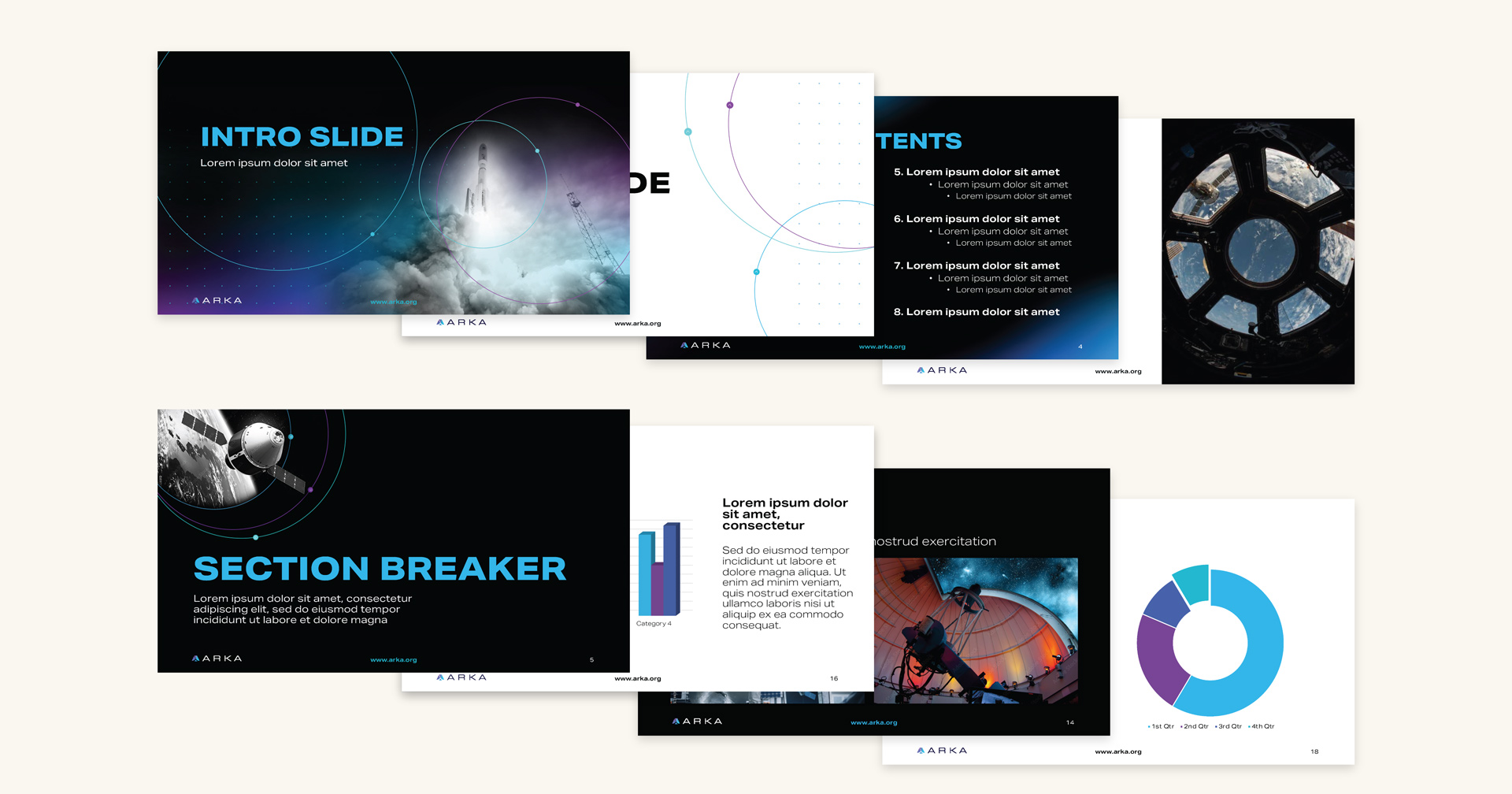
Strategies for Successful Brand Expansion
Effective brand expansion requires a strategic approach. Here are some key strategies to consider:
1. Market Research and Analysis
Understanding the market landscape is crucial for successful brand expansion. Conduct thorough research to identify new opportunities, target audiences, and potential challenges. Analyze competitors and market trends to develop a clear expansion strategy.
2. Leveraging Digital Channels
Digital marketing plays a vital role in brand expansion. Utilize digital channels such as social media, email marketing, and search engine optimization (SEO) to reach new audiences and build brand awareness. A strong online presence can significantly boost brand expansion efforts.
3. Product Line Extension
Extending the product line is an effective way to expand a brand. Introduce new products or services that complement the existing offerings. Ensure that the new additions align with the brand’s core values and appeal to the target audience.
4. Geographic Expansion
Entering new geographic markets can significantly boost growth. Conduct a thorough analysis of potential markets to identify the most promising regions. Develop a tailored market entry strategy that considers local preferences, regulations, and competitive dynamics.
5. Partnerships and Alliances
Forming strategic partnerships and alliances can accelerate brand expansion. Collaborate with complementary brands or businesses to co-create products, share distribution channels, or engage in joint marketing efforts. Partnerships can provide access to new customer bases and resources.
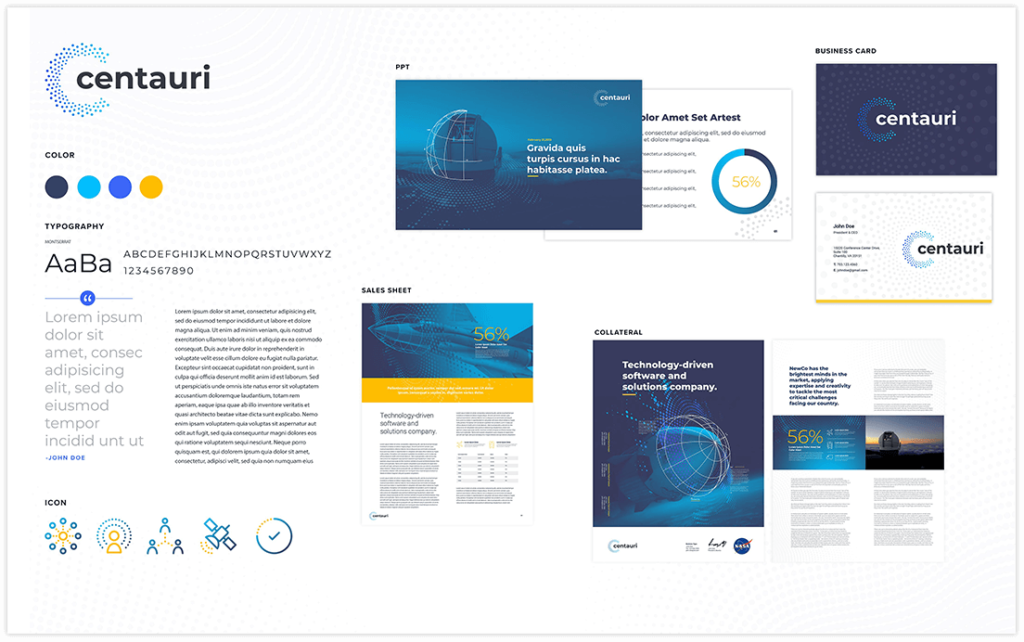
Tips for Maximizing Brand Expansion Success
To maximize the success of your brand expansion efforts, consider the following tips:
- Stay True to Your Brand: Ensure that all expansion activities align with your brand’s core values and promise. Consistency is key to maintaining brand integrity.
- Invest in Brand Marketing: Allocate sufficient resources to brand marketing and promotion. A well-executed marketing campaign can significantly boost brand awareness and support expansion efforts.
- Monitor and Measure Performance: Continuously monitor the performance of your expansion initiatives. Use key performance indicators (KPIs) to track progress and make data-driven adjustments as needed.
- Engage with Your Audience: Foster strong relationships with your customers. Engage with them through social media, customer feedback, and loyalty programs to build brand loyalty and advocacy.
- Be Adaptable: Stay flexible and open to change. Market conditions and customer preferences can shift, so be prepared to adapt your strategies accordingly.



Brand expansion is a powerful lever for driving growth and creating value in private equity. By strategically expanding a brand’s reach and influence, private equity firms can unlock new opportunities, enhance market positioning, and build a sustainable competitive advantage. At Bluetext, we specialize in helping private equity firms navigate the complexities of brand expansion. Contact us today to learn how we can support your brand growth initiatives and unlock the full potential of your investments.
In today’s highly competitive market, brand strength is more than just a logo or a catchy slogan; it’s a powerful asset that can significantly enhance a company’s value. At Bluetext, we understand that building a robust brand is essential not only for customer engagement but also for driving substantial financial performance, especially in the context of private equity. In this blog post, we’ll explore how enhancing your brand can directly correlate to increased value and positively impact private equity returns.
The Power of a Strong Brand
A strong brand differentiates a company in the marketplace, creating a lasting impression and fostering loyalty among customers. But beyond these qualitative benefits, a well-established brand translates into tangible financial gains. Here’s how:
- Market Perception and Customer Loyalty: A compelling brand narrative and consistent messaging build trust and loyalty. Customers are more likely to purchase from a brand they recognize and trust, which leads to higher sales and repeat business. This loyalty also allows companies to command premium pricing, further boosting revenue.
- Competitive Edge: In industries saturated with similar products and services, a strong brand stands out. This differentiation can lead to increased market share and better margins. For private equity firms, investing in companies with a clear and distinct brand can mean a more secure investment and a quicker path to profitability.
- Attracting Talent: Top talent is drawn to companies with strong, positive brand identities. High-caliber employees drive innovation and efficiency, improving overall business performance. This is particularly important for private equity-owned firms where operational improvements can lead to significant value creation.
- Customer Acquisition Costs: A recognizable brand can reduce marketing and customer acquisition costs. When a brand is well-known and trusted, word-of-mouth and organic growth through repeat customers become powerful tools, lowering the overall expenditure on marketing efforts.
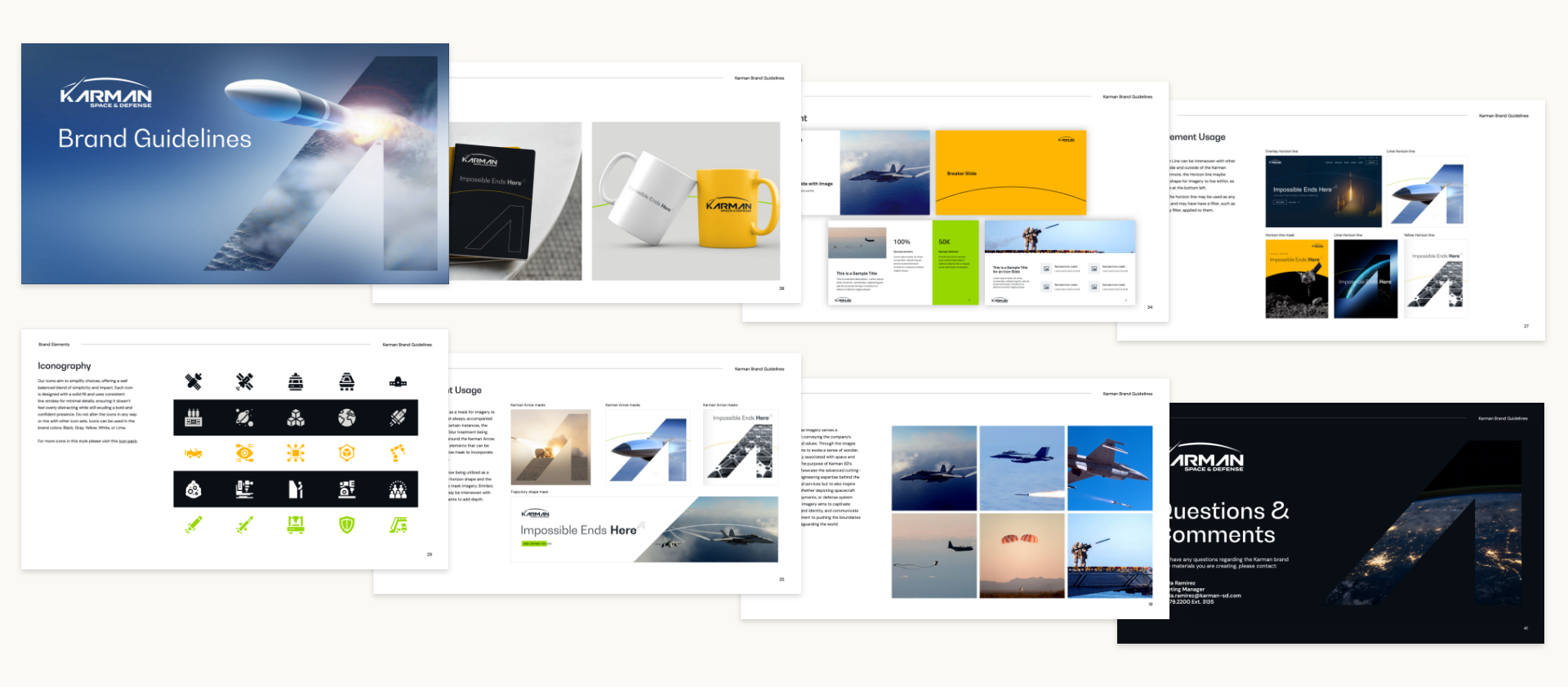

The Impact on Private Equity Performance
Private equity (PE) firms seek investments that promise substantial returns, and brand strength is a critical factor in achieving this. Here’s why:
- Valuation Multiples: Companies with strong brands often command higher valuation multiples. During the acquisition phase, PE firms can justify paying a premium for a company with a robust brand because of the long-term value it promises. When it’s time to exit, these same firms can sell the brand for a higher multiple, ensuring a lucrative return on investment.
- Faster Time to Exit: A company with a strong brand can achieve growth milestones quicker, making it an attractive acquisition target or IPO candidate. The enhanced market perception and customer loyalty contribute to a faster and more profitable exit strategy for PE firms.
- Risk Mitigation: A strong brand can act as a buffer during economic downturns. Loyal customers are less likely to switch to competitors, providing a more stable revenue stream. This stability reduces the investment risk for PE firms, making strong brands a safer bet.
- Operational Efficiency: As mentioned earlier, attracting top talent is easier for well-branded companies. Skilled employees drive operational improvements, which can be critical in the high-stakes environment of private equity. These operational efficiencies translate to improved margins and higher overall company value.
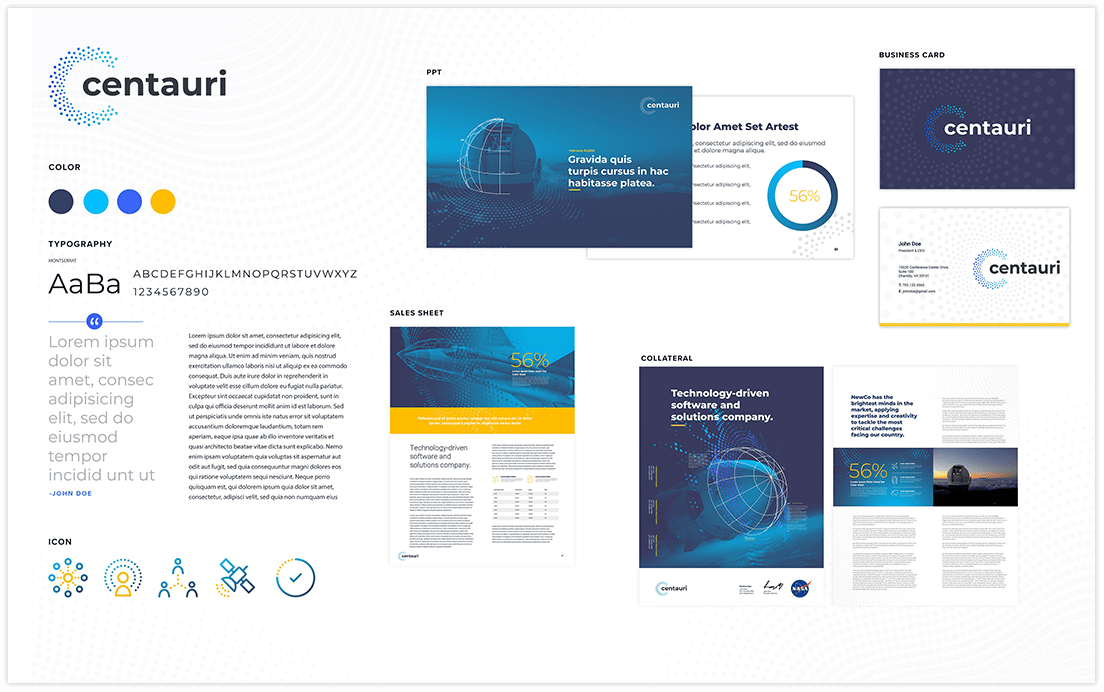

Conclusion
Building a strong brand is not merely a marketing exercise; it’s a strategic investment that can drive significant financial performance and enhance private equity returns. At Bluetext, we specialize in creating compelling brand stories that resonate with customers and drive business growth. By focusing on brand strength, private equity firms can unlock new levels of value and achieve exceptional performance in their portfolios.
Whether you’re a business looking to attract investment or a private equity firm seeking to enhance your portfolio’s performance, investing in your brand is a critical step towards success. Contact Bluetext today to learn how we can help build your brand and, in turn, build your value.
In the realm of digital marketing, the design of your website is more than just an aesthetic endeavor; it is a strategic tool to build emotional connections with your audience. At Bluetext, we understand that color psychology plays a pivotal role in this process, influencing perceptions, decisions, and actions. By leveraging the power of colors, we can create a visually compelling and emotionally resonant experience for your visitors. Let’s dive into how color psychology can be harnessed to enhance your website design and create lasting impressions.
Understanding Color Psychology
Color psychology is the study of how colors affect human behavior and emotions. Different colors can evoke specific feelings and associations, making them a powerful tool in website design. Here’s a quick rundown of common color associations:
- Red: Passion, urgency, excitement, and attention. Often used in call-to-action buttons to stimulate quick responses.
- Blue: Trust, calmness, and professionalism. Popular among brands that want to convey reliability and stability.
- Green: Growth, health, and tranquility. Ideal for eco-friendly and wellness-focused brands.
- Yellow: Happiness, optimism, and warmth. Great for creating a cheerful and inviting atmosphere.
- Purple: Luxury, creativity, and wisdom. Often used by brands that want to portray a sense of sophistication and innovation.
- Black: Power, elegance, and sophistication. Commonly used in high-end and minimalist designs.
- White: Purity, simplicity, and cleanliness. Essential for creating a sense of space and clarity.


Creating Emotional Connections Through Color
1. Establishing Brand Identity
Your website is an extension of your brand, and the colors you choose should reflect your brand’s personality and values. At Bluetext, we work with clients to identify their core attributes and translate them into a cohesive color palette. For example, a tech company might use blue to convey trust and innovation, while a beauty brand might opt for purple to emphasize luxury and creativity.
2. Enhancing User Experience
A well-chosen color scheme can guide users through your website, making it easier for them to navigate and find the information they need. By strategically placing colors in key areas, such as navigation menus, call-to-action buttons, and highlighted sections, we can create a more intuitive and enjoyable user experience. This not only helps keep visitors engaged but also encourages them to take desired actions, such as signing up for a newsletter or making a purchase.
3. Evoking Desired Emotions
Different colors can evoke specific emotions, which can be leveraged to create the desired atmosphere on your website. For instance, a spa website might use soft greens and blues to create a calming effect, while an e-commerce site might use vibrant reds and oranges to evoke excitement and urgency. By aligning the color scheme with the emotional tone you want to set, you can create a more immersive and impactful experience for your visitors.
4. Building Trust and Credibility
Color psychology can also play a crucial role in building trust and credibility with your audience. Blue, for example, is often associated with trust and reliability, making it a popular choice for financial institutions and healthcare providers. Similarly, using consistent and harmonious color schemes can create a sense of professionalism and attention to detail, which can enhance your brand’s credibility.



Implementing Color Psychology in Website Design
At Bluetext, we follow a strategic approach to implementing color psychology in website design:
1. Research and Analysis
We start by understanding your brand, target audience, and industry. This involves analyzing competitors, identifying key emotional triggers, and exploring cultural associations with colors.
2. Color Palette Development
Based on our research, we develop a color palette that aligns with your brand’s personality and goals. This palette includes primary, secondary, and accent colors that work harmoniously together to create a cohesive look and feel.
3. Design and Testing
We integrate the chosen colors into the website design, paying close attention to their placement and impact. We also conduct user testing to gather feedback and make necessary adjustments to ensure the colors effectively convey the desired emotions and enhance the user experience.
4. Continuous Optimization
Color psychology is not a one-time effort. We continuously monitor the performance of your website and make data-driven adjustments to optimize the color scheme for better engagement and conversions.


Conclusion
Color psychology is a powerful tool in website design that can help create emotional connections with your audience. By understanding the emotional impact of colors and strategically incorporating them into your website, you can enhance user experience, build trust, and drive desired actions. At Bluetext, we are experts in leveraging color psychology to create visually stunning and emotionally resonant websites that deliver results.
Ready to transform your website with the power of color? Contact Bluetext today and let us help you create a digital experience that truly connects with your audience.
In the dynamic realm of private equity, where strategic investments and value creation define success, one critical element often shapes the trajectory of portfolio companies: effective marketing. At Bluetext, we recognize that marketing transcends mere promotion—it is a strategic lever that can drive growth, enhance value, and create a ripple effect that benefits both investors and their portfolio companies. In this blog post, we will explore the multifaceted impact of effective marketing on private equity portfolio companies, illustrating how it can transform strategic investments into lucrative success stories.
The Strategic Importance of Marketing in Private Equity
Private equity firms are increasingly acknowledging the strategic significance of marketing. It’s not just a tool for immediate sales growth but a long-term investment that amplifies the overall value of portfolio companies. Here’s how:
- Brand Building and Reputation Management: A strong brand and positive reputation are invaluable assets. Effective marketing crafts compelling brand narratives, enhances visibility, and fosters trust with stakeholders. For portfolio companies, a robust brand can lead to improved customer loyalty, attract top talent, and secure favorable terms in negotiations and partnerships.
- Market Positioning: Strategic marketing positions portfolio companies effectively within their markets. By identifying unique selling propositions and differentiating from competitors, marketing efforts can establish a niche that attracts dedicated customers and drives sustainable growth.
- Customer Acquisition and Retention: Well-executed marketing strategies, including targeted campaigns and personalized communications, significantly boost customer acquisition and retention rates. For private equity firms, this translates into steady revenue streams and heightened enterprise value.
Enhancing Portfolio Company Value Through Marketing
Effective marketing initiatives directly contribute to the value enhancement of private equity portfolio companies. Here are key ways in which marketing impacts portfolio success:
- Revenue Growth: Targeted marketing campaigns drive sales by reaching the right audience with the right message at the right time. Whether through digital advertising, content marketing, or social media engagement, these efforts enhance top-line growth, a crucial factor in portfolio valuation.
- Operational Efficiency: Modern marketing leverages data and analytics to optimize performance. By utilizing AI and machine learning, marketing campaigns are refined for maximum efficiency, reducing costs and improving ROI. This operational efficiency is particularly valuable for private equity firms aiming to streamline portfolio company operations.
- Scalability: Marketing strategies that emphasize scalability ensure that as a company grows, its marketing efforts can expand seamlessly. This scalability is essential for private equity firms that often look to grow portfolio companies rapidly to prepare for exit strategies.
- Enhanced Exit Strategies: A well-marketed company is more appealing to potential buyers. By building a strong brand, demonstrating consistent revenue growth, and showcasing a loyal customer base, private equity firms can increase the attractiveness of their portfolio companies, achieving higher multiples and more profitable exits.
Centauri: Marketing Success in Action
Consider for example, our work with Centauri. When Arlington Capital Partners acquired three leading companies in the national security sector—Integrity Applications Incorporated, Xebec Global, and Dependable Global Solutions—the IAI team turned to Bluetext to develop and launch a new unified brand from scratch. In less than 6 months, the teams worked together to launch Centauri. Following our work with the company, it was sold to KBR for $827 million, providing Arlington Capital Partners with a profit of around $300 million.
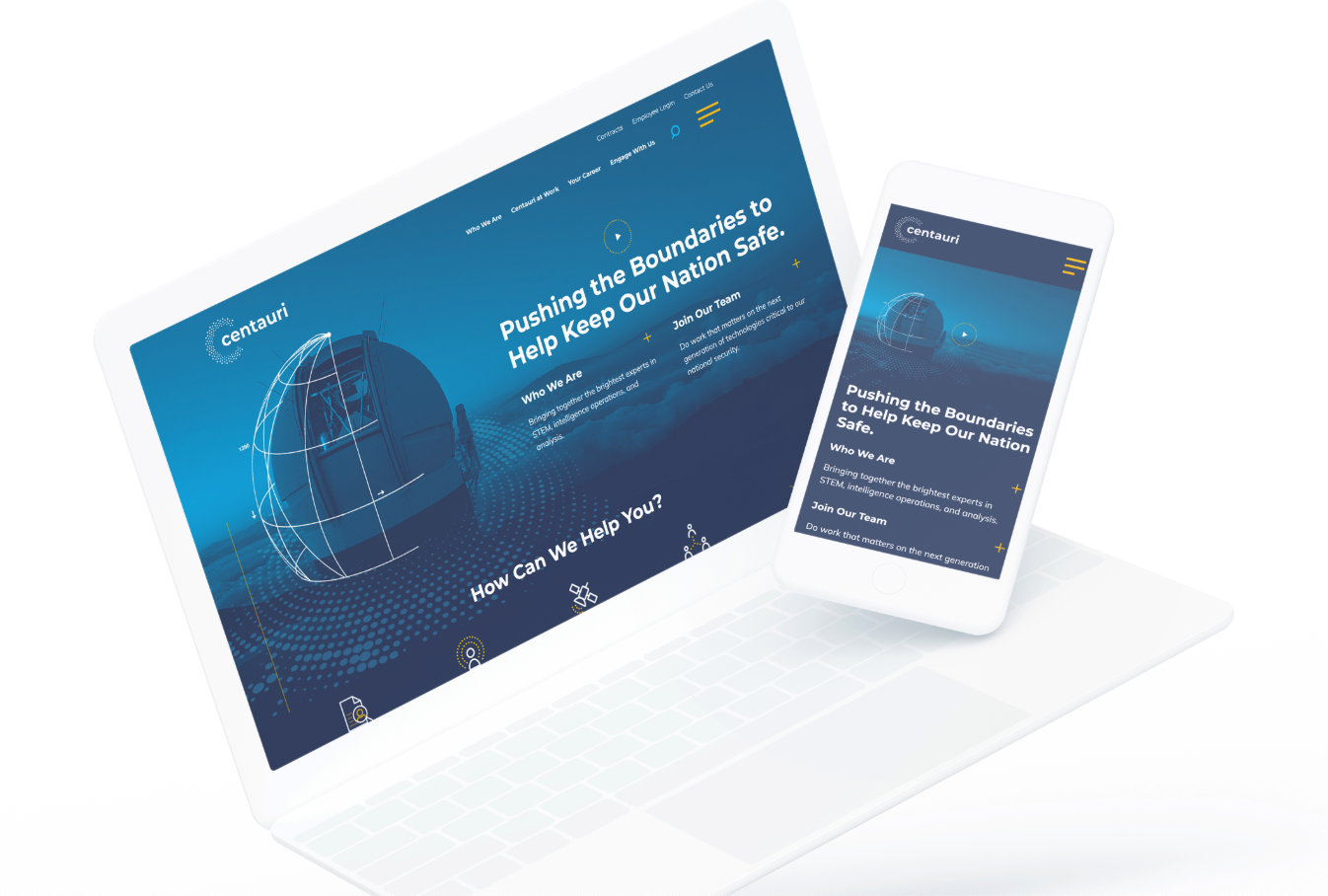

The Future of Marketing in Private Equity
As the private equity landscape evolves, the role of marketing will continue to grow in significance. Here are some trends to watch:
- Data-Driven Marketing: Advanced analytics and big data are transforming how marketing strategies are developed and executed. Data-driven insights enable more precise targeting, better customer understanding, and improved campaign performance.
- Digital Transformation: The ongoing digital revolution presents both challenges and opportunities. Private equity firms must ensure that their portfolio companies are not only keeping pace with digital trends but also leveraging them to gain competitive advantages.
- Integrated Marketing Strategies: Successful marketing is no longer about isolated campaigns but integrated strategies that encompass various channels and touchpoints. Omnichannel approaches that provide a seamless customer experience will be crucial for driving growth and value.
Conclusion
Effective marketing is a powerful catalyst that can significantly enhance the performance and value of private equity portfolio companies. By building strong brands, optimizing operations, and driving scalable growth, marketing creates a ripple effect that benefits all stakeholders involved. At Bluetext, we specialize in crafting strategic marketing solutions that unlock the full potential of portfolio companies, ensuring that private equity investments yield maximum returns.
For more insights on how effective marketing can transform your portfolio companies, contact us at Bluetext. Together, we can harness the power of marketing to drive your private equity success.
In the fiercely competitive landscape of private equity, standing out from the crowd is not just desirable; it’s essential. With a multitude of firms vying for attention and investor trust, the challenge of differentiation looms large. However, mastering the art of branding can set your private equity firm apart, creating a compelling identity that resonates with investors and stakeholders alike. At Bluetext, we understand the importance of crafting unique and impactful branding strategies tailored specifically for private equity firms. Let’s delve into the nuances of this art form and explore how your firm can leverage branding to carve out its niche in the market.
Embrace New Trends in Branding
In today’s fast-paced digital landscape, staying ahead of the curve means embracing new trends in branding. From immersive experiences and interactive content to personalized marketing automation and influencer partnerships, there are countless opportunities to elevate your brand and engage with your audience in meaningful ways. By keeping a finger on the pulse of emerging trends and technologies, your firm can stay relevant and capture the attention of investors in an increasingly crowded market.
Roll Up Brands into One Cohesive Narrative
For private equity firms with multiple portfolio companies, creating a cohesive brand narrative can be a powerful branding strategy. By aligning the values, messaging, and visual identity of each portfolio company under a single overarching brand narrative, your firm can strengthen its position in the market and create synergies across its investment portfolio. Whether it’s through a shared mission or a unified brand story, rolling up brands into one cohesive narrative can help differentiate your firm and maximize the impact of your investments.
Harness the Power of Naming
In the world of branding, a name can make all the difference. A distinctive and memorable name can help your firm stand out in a sea of competitors and capture the attention of investors. Whether it’s a bold and innovative name that reflects your firm’s forward-thinking approach or a timeless and classic name that evokes trust and reliability, choosing the right name can set the tone for your brand and shape how it is perceived by others. Invest time and resources into selecting a name that not only differentiates your brand but also resonates with your target audience and aligns with your firm’s values and vision.
Define Your Value Proposition
At the heart of every successful brand lies a clear and compelling value proposition. For private equity firms, this means articulating what sets you apart from the competition. Whether it’s your specialized expertise in a particular industry, your track record of successful investments, or your unique approach to value creation, your value proposition should resonate with your target audience and clearly communicate the benefits of partnering with your firm.
Establish Your Brand Personality
Just like individuals, brands have personalities that shape how they are perceived by others. For private equity firms, cultivating a strong brand personality can help humanize your firm and foster deeper connections with investors. Whether you want to be seen as innovative and forward-thinking, trustworthy and reliable, or bold and dynamic, your brand personality should be consistent across all touch points, from your website and marketing materials to your interactions with clients and stakeholders.
Leverage Thought Leadership
In an industry driven by expertise and insights, positioning your firm as a thought leader can be a powerful branding strategy. By sharing your knowledge and perspectives through thought leadership content such as whitepapers, articles, and webinars, you can demonstrate your firm’s expertise, build credibility with investors, and differentiate yourself from competitors. Thought leadership also provides an opportunity to showcase your unique approach to investing and value creation, further reinforcing your brand identity.
Cultivate a Strong Visual Identity
In the world of branding, first impressions matter. A strong visual identity not only helps your firm stand out visually but also communicates important aspects of your brand personality and values. From your logo and color palette to your website design and marketing collateral, every element of your visual identity should be carefully crafted to reflect your firm’s unique identity and resonate with your target audience.
Foster Authentic Relationships
At its core, branding is about building relationships – with investors, with stakeholders, and with the broader community. For private equity firms, fostering authentic relationships is crucial for establishing trust and credibility in the market. Whether it’s through personalized communication, transparent reporting, or active engagement in industry events and networking opportunities, investing in relationships can pay dividends in building a strong and resilient brand.
Prioritize Brand Consistency
Consistency is key to building a strong and recognizable brand. Ensure that all aspects of your brand – from messaging and visuals to tone of voice and customer experience – remain consistent across all channels and touchpoints. This includes your website, social media profiles, marketing materials, and even internal communications. Consistency breeds trust and familiarity, making it easier for investors to connect with your brand and understand what you stand for.
Tell Compelling Stories
In a world inundated with information, storytelling can be a powerful tool for capturing attention and making an emotional connection with your audience. Share compelling stories about your firm’s journey, successes, and the impact of your investments. Highlighting real-world examples of how your firm has added value to portfolio companies and helped them achieve their goals can showcase your expertise and differentiate your brand in a meaningful way.
Monitor and Adapt
The branding landscape is constantly evolving, and what works today may not necessarily work tomorrow. Stay vigilant and monitor industry trends, market dynamics, and shifts in investor preferences. Be prepared to adapt your branding strategies accordingly, whether it’s updating your messaging to reflect changing market conditions, refreshing your visual identity to stay relevant, or pivoting your thought leadership efforts to address emerging topics and concerns. By staying agile and responsive, your firm can remain competitive and continue to stand out in a rapidly changing environment.
In conclusion, the art of differentiation is a nuanced and multifaceted endeavor, but with the right branding strategies in place, private equity firms can elevate their presence in the market and attract the attention of investors and stakeholders. By embracing new trends in branding, rolling up brands into one cohesive narrative, harnessing the power of naming, defining a clear value proposition, and establishing a strong brand personality, your firm can carve out its niche and thrive in the competitive landscape of private equity. At Bluetext, we’re here to help you navigate this journey and unlock the full potential of your brand. Contact us today to learn more.
In today’s interconnected world, the call for diversity and representation is not just a social imperative but also a business necessity. As marketing professionals, we have a unique opportunity and responsibility to champion inclusivity in brand communications. In this blog post, we explore the significance of inclusive marketing and how it can drive meaningful connections with diverse audiences.
Embracing Diversity as a Strength
At the heart of inclusive marketing lies the recognition that diversity is not only prevalent but also enriching. By embracing diverse perspectives, experiences, and identities, brands can create authentic connections with a wide range of consumers. Whether it’s ethnicity, gender, age, sexual orientation, or ability, acknowledging and celebrating diversity fosters a sense of belonging and resonates deeply with audiences.
Reflecting the Real World
Inclusive marketing goes beyond tokenism or superficial representation. It requires a genuine commitment to reflecting the diversity of the real world in brand communications. This means casting a diverse range of individuals in advertising campaigns, showcasing diverse lifestyles and experiences, and ensuring that all segments of society feel seen and valued.
Fostering Empathy and Understanding
Inclusive marketing is not just about reaching diverse audiences; it’s about fostering empathy and understanding across different communities. By telling authentic stories that reflect the lived experiences of diverse individuals, brands can bridge cultural divides, challenge stereotypes, and promote empathy and understanding.
Building Trust and Loyalty
Inclusivity isn’t just a moral imperative; it’s also good for business. Research has shown that consumers are more likely to trust and support brands that demonstrate a commitment to diversity and inclusion. By authentically engaging with diverse audiences, brands can build trust, loyalty, and long-term relationships that transcend transactional interactions.
The Role of Marketing Agencies
As marketing agencies, we have a crucial role to play in driving the adoption of inclusive marketing practices. This involves challenging outdated norms and stereotypes, advocating for diversity and representation within our own organizations, and guiding our clients towards more inclusive brand communications.
More than a Trend
Inclusive marketing isn’t just a trend; it’s a fundamental shift in how brands engage with their audiences. By championing diversity and representation in brand communications, we can create a more inclusive and equitable society while also driving business success. As marketing professionals, let’s embrace the power of inclusive marketing to create meaningful connections, foster empathy and understanding, and build brands that truly resonate with diverse audiences.
Looking to improve your brands inclusivity? Contact us.
In the dynamic world of private equity, the pursuit of superior returns is an ever-present goal. In this quest, factors such as operational efficiency, market timing, and strategic investments often take center stage. However, one element that is increasingly proving to be a pivotal contributor to success is the role of marketing. Beyond just advertising and promotion, marketing encompasses a comprehensive approach that stretches from brand strategy to the bottom line. Here, we delve into how marketing can significantly influence private equity returns.
Building Strong Brands
At the heart of effective marketing lies the creation and nurturing of strong brands. In the realm of private equity, acquiring or investing in companies with robust brand equity can yield substantial benefits. A strong brand not only commands premium pricing power but also fosters customer loyalty and facilitates market expansion. Consequently, it can translate into enhanced revenues and margins, directly impacting the bottom line.
By leveraging market research, consumer insights, and strategic positioning, marketing professionals within private equity firms play a pivotal role in identifying and maximizing the potential of brands. Whether it involves revitalizing existing brands or establishing new ones, a well-crafted brand strategy sets the stage for sustainable growth and value creation.
Take for example our work with Arlington Capital Partners and its portfolio company, Centauri. Bluetext designed a cutting-edge look and feel for Centauri that sets them apart from the competition. Written in a custom lowercase typeface, the Centauri logo is modern and approachable with a unique icon representing the stars that make up the Centauri constellation.



Driving Customer Acquisition and Retention
In today’s competitive landscape, customer acquisition and retention are imperative for sustained business success. Marketing strategies tailored to target audience segments can significantly bolster both these aspects, thereby driving top-line growth and enhancing profitability.
Through a combination of digital marketing, content creation, and customer relationship management, private equity-backed companies can effectively reach and engage with their target customers. By delivering personalized experiences and building lasting relationships, these companies can not only attract new customers but also retain existing ones, thus ensuring a steady revenue stream and long-term profitability.
When Francisco Partners acquired the distinguished global leader in weather data previously owned by IBM, The Weather Company (parent company of The Weather Channel and several other esteemed consumer brands), they looked to Bluetext as a trusted partner to concept, design, and build the new Weather Company website in record-breaking time.
From the inception of the engagement, the goal was clear – create a visually stunning website that caters to the specific content needs and expectations of visitors across priority and secondary audiences alike. In a comprehensive process, Bluetext was tasked with the creation of a new information architecture, which was broken down to establish the content strategy for each individual page. SEO, UX, cross-linking, and the use of taxonomy were all primary considerations in the development of the content strategy and the resulting wireframes which outline the structure of each page.
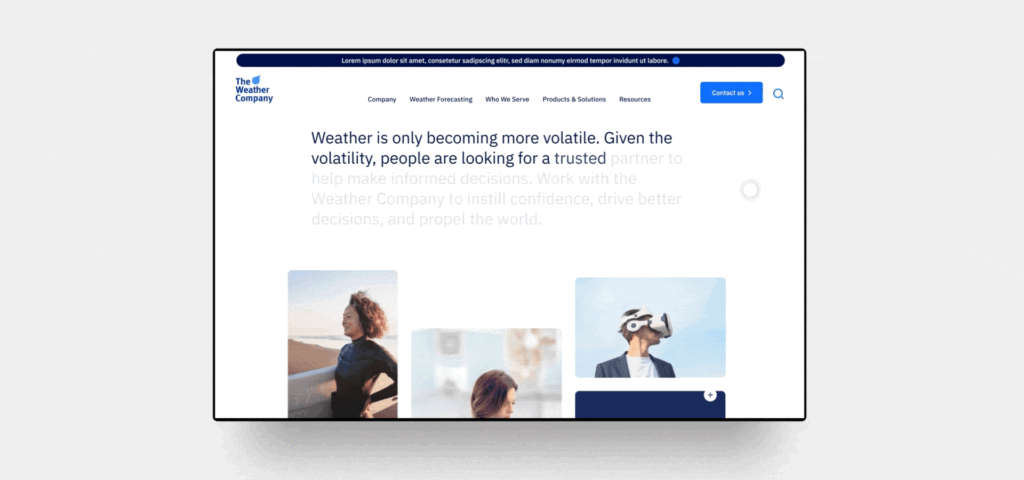

Optimizing Operations and Efficiency
Marketing’s influence extends beyond external-facing activities to internal processes and operations. By analyzing data, measuring performance, and optimizing workflows, marketing teams can identify inefficiencies and streamline operations, thereby improving overall efficiency and productivity.
From supply chain management to customer service operations, marketing-driven insights can inform strategic decisions aimed at enhancing operational effectiveness. By reducing costs, minimizing waste, and maximizing resource utilization, these initiatives directly contribute to bottom-line profitability, ultimately driving higher returns for private equity investors.
Harnessing Innovation and Adaptation
In today’s rapidly evolving marketplace, adaptability and innovation are essential for survival. Marketing serves as a catalyst for innovation by identifying emerging trends, uncovering unmet customer needs, and fostering a culture of experimentation and creativity.
Through initiatives such as product development, service innovation, and market experimentation, private equity-backed companies can stay ahead of the curve and capitalize on new opportunities. By embracing change and continuously refining their offerings, these companies can maintain relevance, drive growth, and ultimately deliver superior returns for investors.
Conclusion
In the realm of private equity, the influence of marketing extends far beyond mere promotion and advertising. From shaping brand identity to driving operational efficiency and fostering innovation, marketing plays a multifaceted role in influencing bottom-line returns. By recognizing the strategic importance of marketing and integrating it into their investment thesis, private equity firms can unlock untapped value, drive sustainable growth, and ultimately achieve superior returns for their investors.
Are you looking to increase your return on investment via the power of marketing? Contact Bluetext to learn how we can support you.
In a world where the digital battleground is ever-evolving, the way we visualize cyber threats is more than just a matter of aesthetics. It’s about conveying a message that resonates with the complexity and urgency of the challenges we face. Over the years, cybersecurity branding has gone through various phases, from the ominous figures in dark hoodies to monstrous depictions of malware. But now, a new trend is emerging—one that’s straight out of a science fiction saga.
The Evolution of Cyber Security Symbolism:
Let’s take a quick trip down memory lane to understand how cybersecurity brands have evolved in their visual language:
- The Hooded Figures: Once upon a time, cybersecurity brands leaned heavily on the stereotype of hackers as mysterious figures cloaked in darkness, lurking in the shadows of the digital realm. While this imagery effectively conveyed the sense of a hidden threat, it also perpetuated stereotypes and failed to capture the true nature of cyber adversaries.


- Abstract Digital Art: In this phase, cybersecurity brands leaned towards abstract digital art to represent cyber threats. They utilized geometric shapes, neon colors, and glitch effects to convey the complexity and unpredictability of digital vulnerabilities. While visually captivating, this approach sometimes lacked a clear connection to the real-world implications of cyber attacks.


- Monstrous Malware: As the threat landscape expanded, so did the imagery associated with cyber threats. Brands began depicting malware as monstrous creatures, embodying the destructive potential of cyber attacks. While this approach added a layer of visual interest, it often bordered on the cartoonish and failed to convey the sophistication of modern cyber threats.


But now, a new era has dawned in the world of cybersecurity branding—one that draws inspiration from the boundless realms of science fiction. Enter the age of Sci-Fi Inspired Branding.
Incorporating elements from the vast expanse of the cosmos, cybersecurity brands are embracing a visual language that speaks to the futuristic nature of the challenges we face. Here are some examples of websites that are boldly venturing into this new frontier:
- SecurityScorecard: With its sleek interface and futuristic aesthetic, SecurityScorecard’s website feels like something straight out of a cyber-thriller video gam. The use of dynamic visuals and futuristic typography conveys a sense of innovation and technological prowess. Check out how Bluetext contributed to this brand revolution.




- Cybereason: Cybereason’s website takes visitors on a journey through the digital universe, with swirling nebulae and sleek spacecraft serving as the backdrop for its cybersecurity solutions. The use of space-themed imagery reinforces the brand’s message of protecting against unknown threats from the far reaches of the digital universe.


- CrowdStrike: As you scroll through CrowdStrike’s website, you’re greeted with a cast of characters straight out of a sci-fi epic—space cowboys and invaders battling it out against a backdrop of cosmic chaos. This playful yet powerful imagery captures the essence of the cyber threat landscape while injecting a sense of adventure into the brand’s messaging.




- Darktrace: Darktrace’s website transports visitors to a futuristic landscape filled with shimmering data streams and pulsating energy fields. The use of sleek, metallic textures and holographic interfaces creates an immersive experience that reflects the cutting-edge nature of the company’s AI-driven cybersecurity solutions.


- SentinelOne: SentinelOne’s website features sleek spacecraft navigating through asteroid fields and alien landscapes. The use of dynamic animations and sci-fi-inspired imagery reinforces the brand’s message of protecting against next-generation cyber threats.
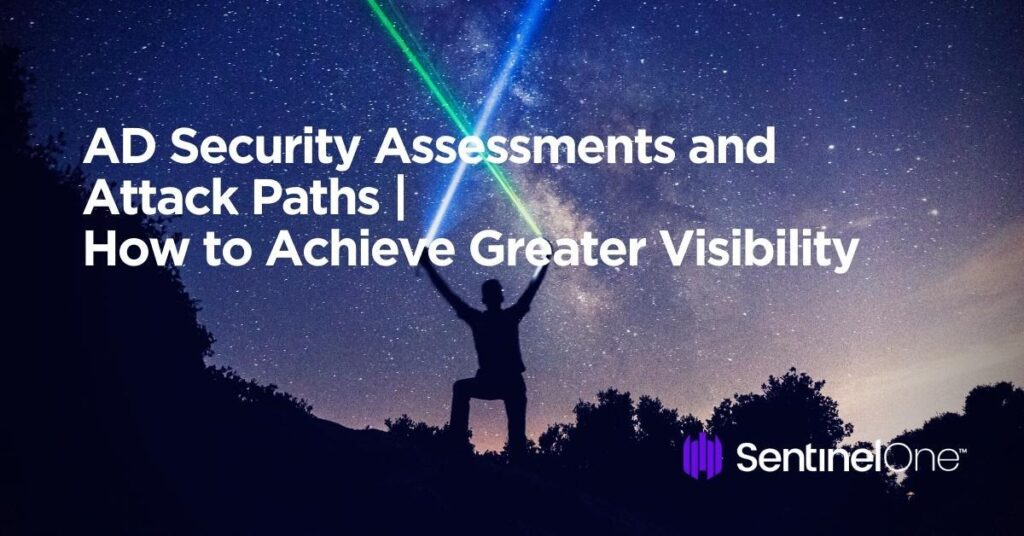

- Varonis: Varonis’ website features sleek, robotic figures that rise against a futuristic backdrop. The use of sci-fi-inspired visuals and dynamic animations creates a sense of immersion, highlighting the company’s innovative approach to data security and threat detection. Varonis’ website captures the imagination and reinforces the brand’s message of protecting against cyber threats in the digital age.


As the line between science fiction and reality is becoming increasingly blurred, it’s only fitting that cybersecurity brands embrace the boundless possibilities of the sci-fi universe. By infusing their visual identity with elements from the farthest reaches of space, these brands are not only staying ahead of the curve but also inspiring a sense of wonder and imagination in their audiences.
So, the next time you find yourself navigating the digital wilderness, remember that the guardians of cyberspace are not just warriors—they’re spacefaring adventurers on a mission to protect the frontiers of the digital realm.